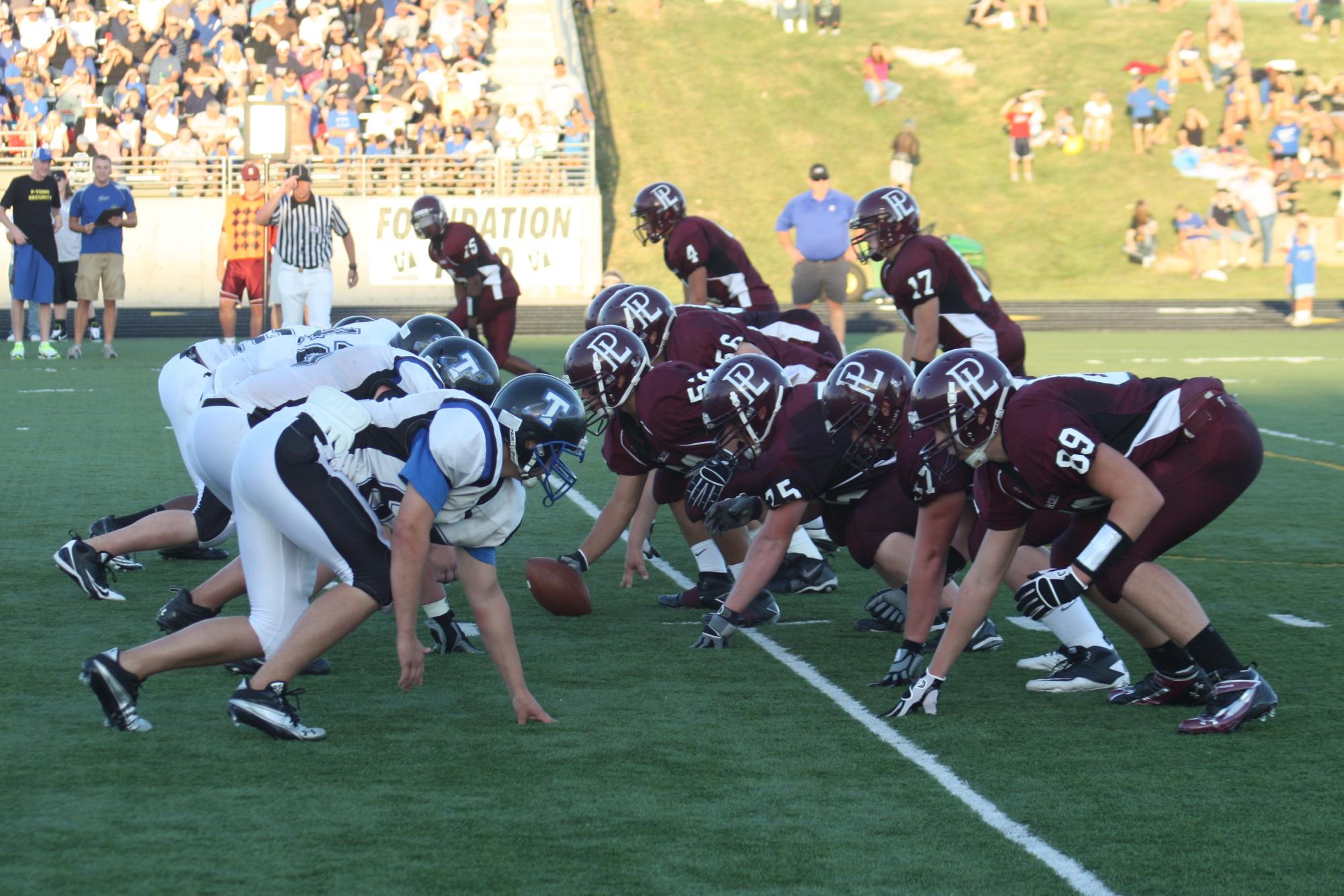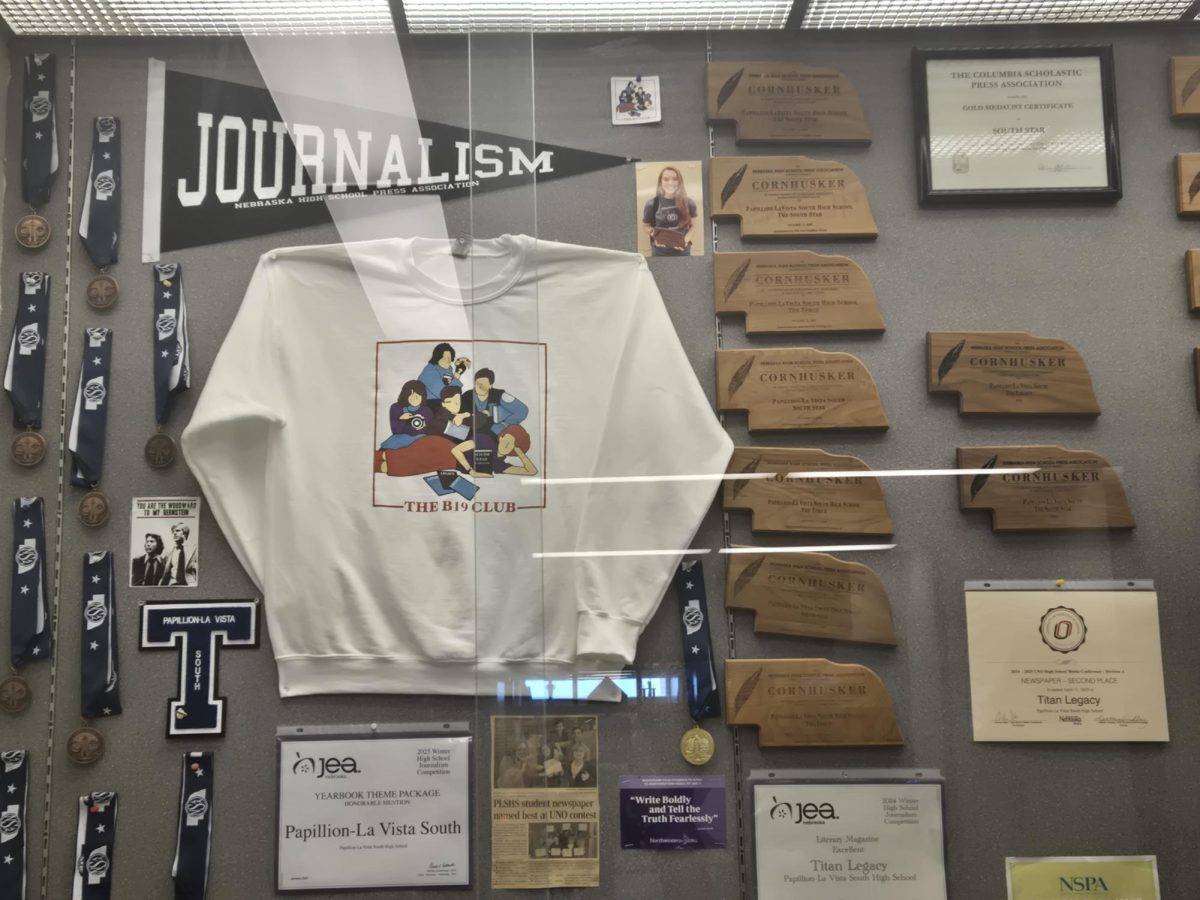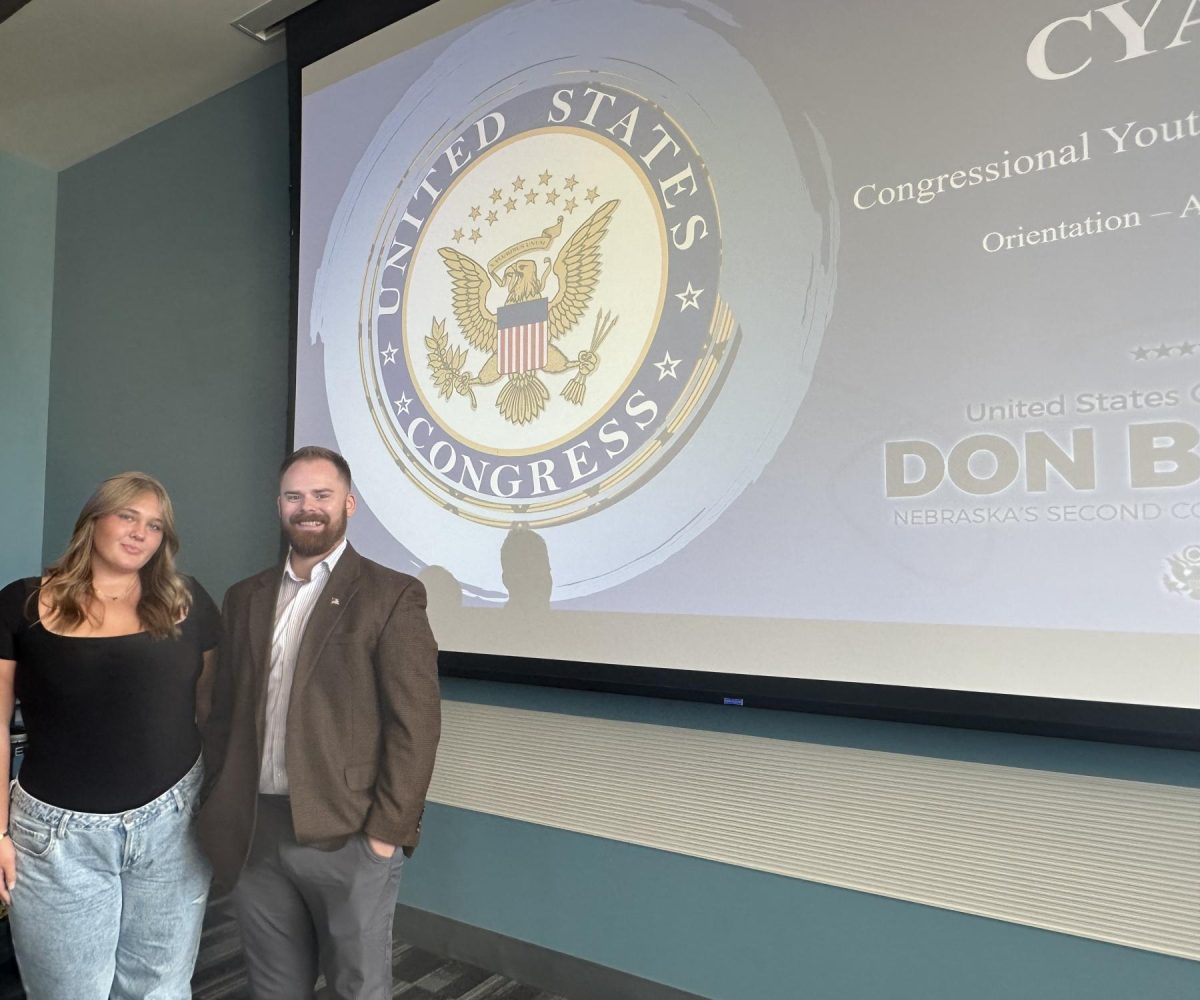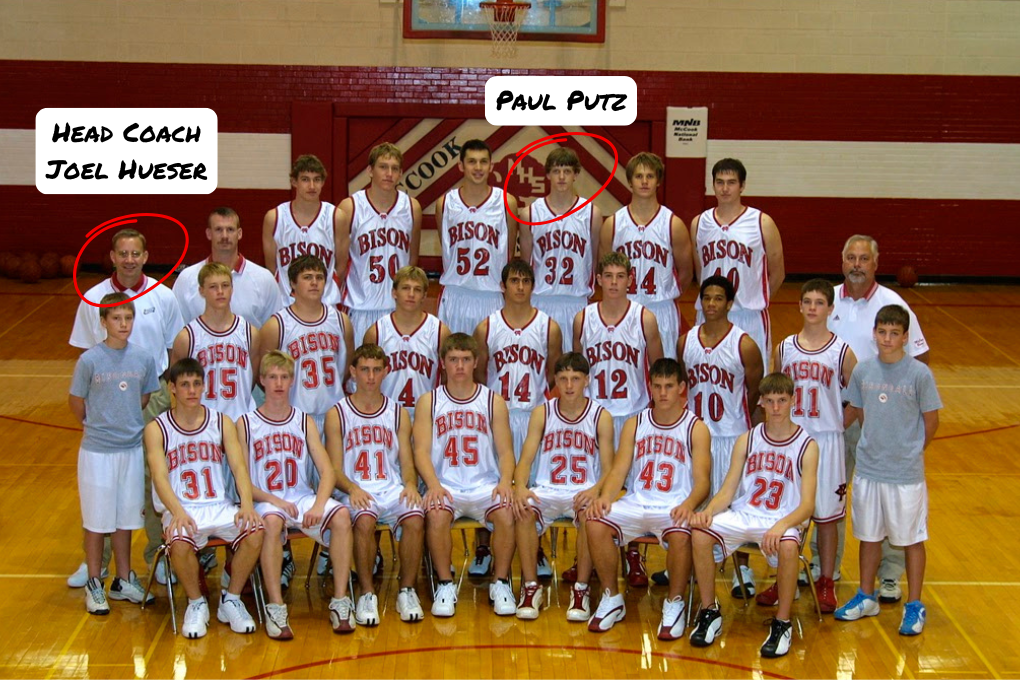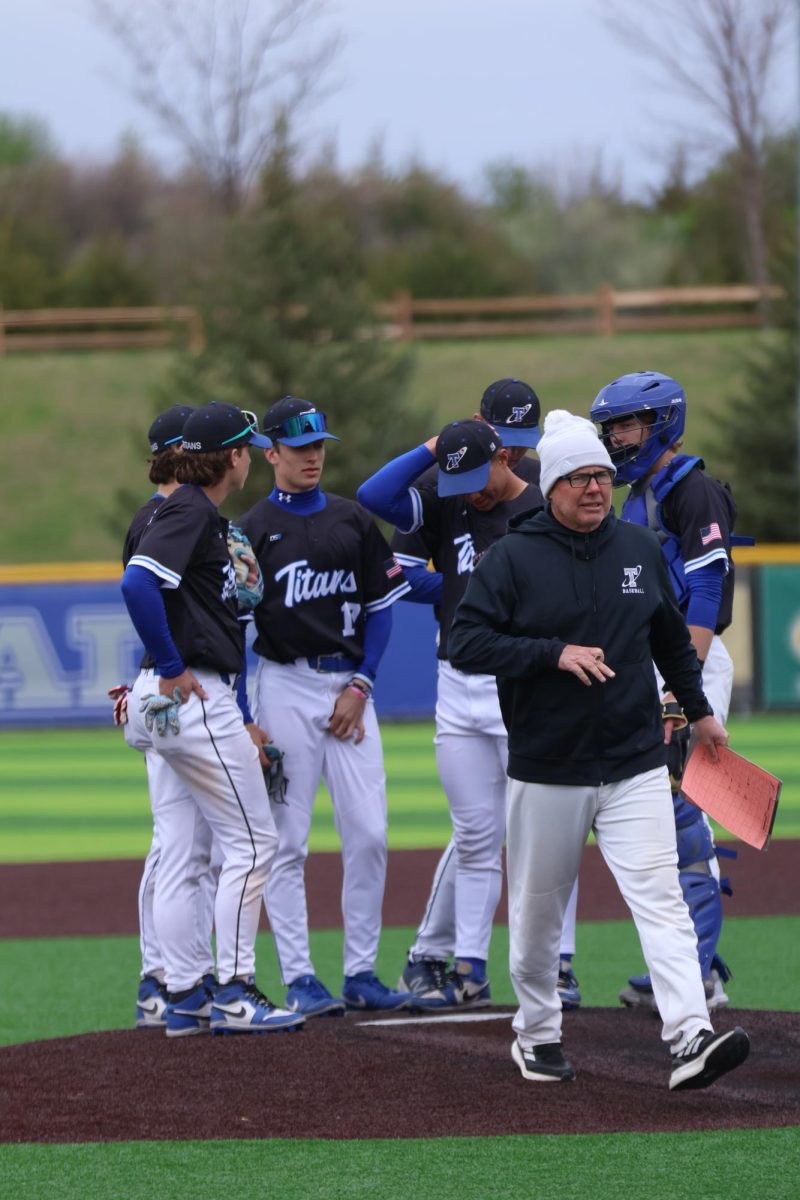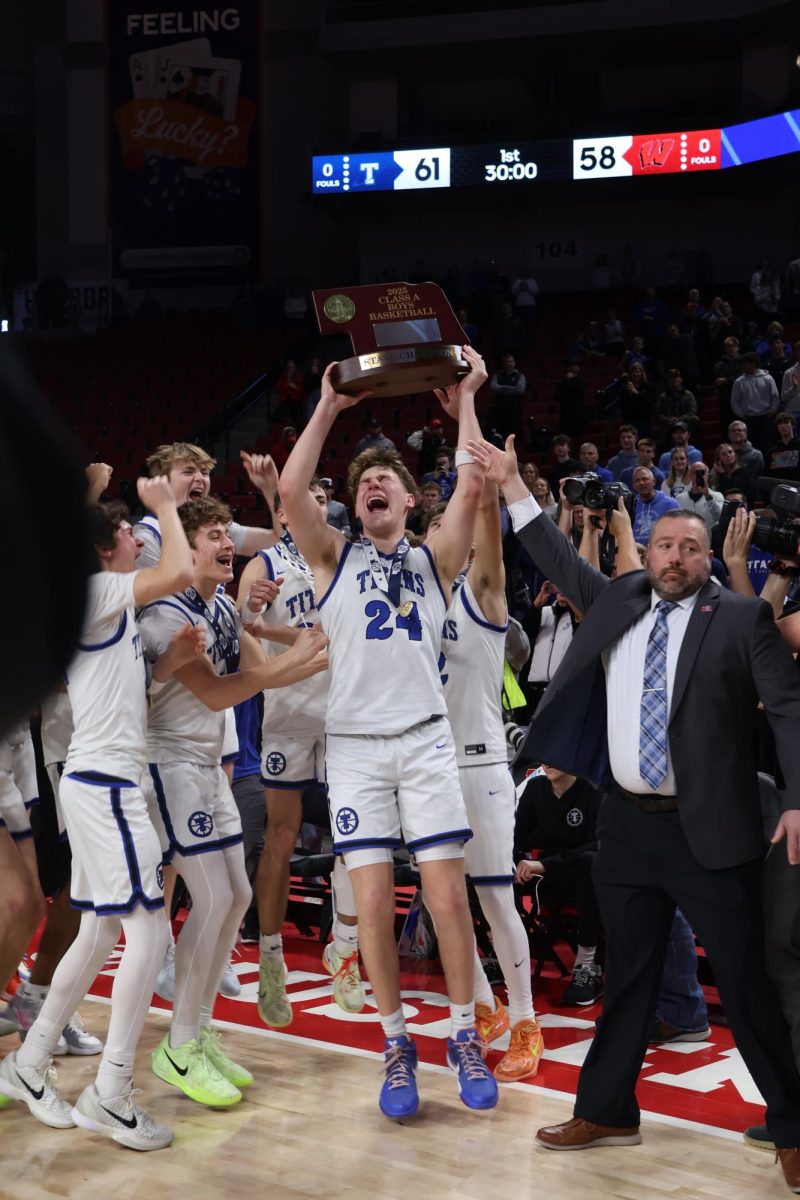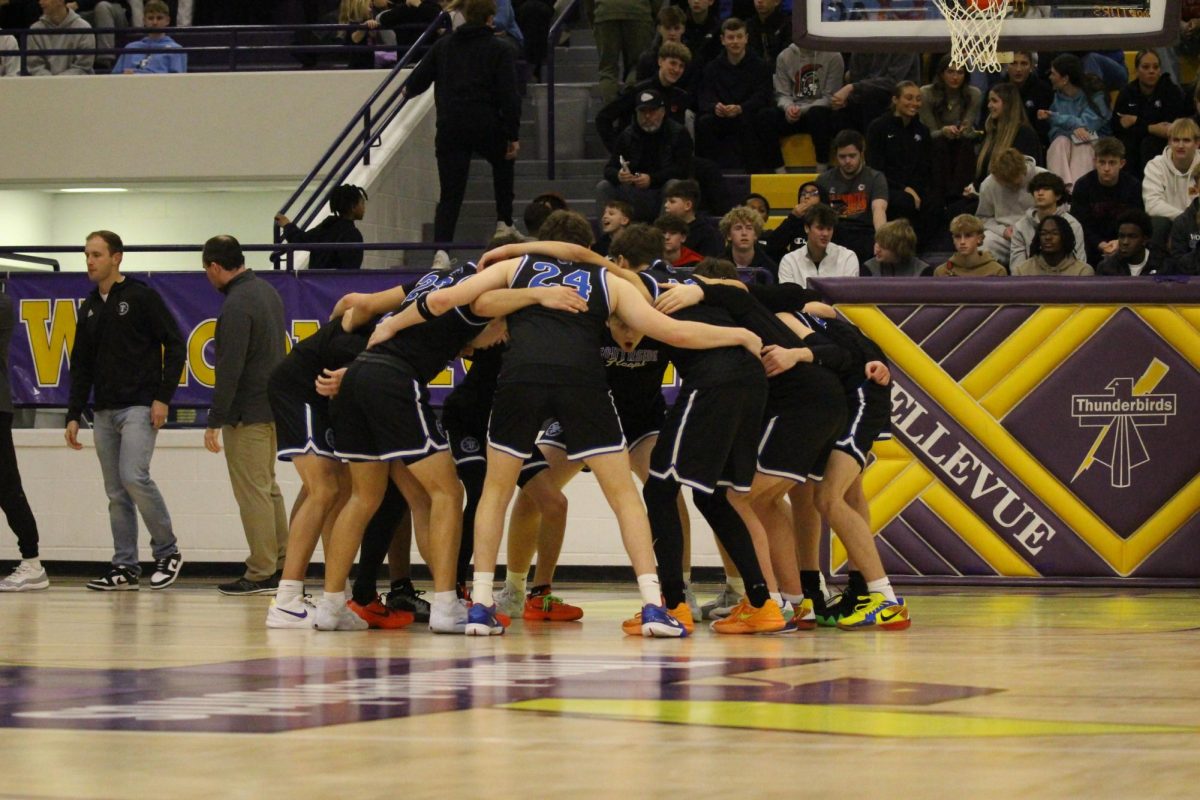Foundation Field is a stadium born from vision, community, and competition. It’s home to one of the fiercest high school rivalries in the state: Titans vs Monarchs.
The rivalry spans from the initial opening of Papio South, back in 2003. The Monarchs hold the all-time record for the rivalry with 12 wins, while the Titans have 10.

When Papillion-La Vista South first opened in 2003, the stadium wasn’t even built. “The first year that we opened, Foundation Field wasn’t done,” said Denise Mabie, a longtime secretary and one of the school’s earliest staff members. “We had to play at, and where the band performed at what they called the Pit, which was the regular football field behind the middle school. It was run down, and in disrepair.”
As the community grew, so did the need for something better. The Papillion-La Vista Community Schools Foundation stepped in—lending not only its name, but also its support to create a stadium worthy of the city’s rising programs.
“We have been very supportive of our Papillion-La Vista Community Schools Foundation, which is where the name of the stadium comes from,” said Cody Redford, a teacher at South and a former Titan football player during the 2011-2014 seasons. “It’s one of the nicer facilities on the high school level. Obviously, it is a joint field even though it is here on our Papillion-La Vista South campus.”
The sense of shared community wasn’t always easy. Even in the early days, there was tension between the two schools. “Papillion High is landlocked. There was no room, so when they got ready to build this school, they had the foresight to buy 80 acres,” Mabie said. “So they built the stadium here, because we had more room. I don’t get why the Monarchs were so against playing here.”

For Jason Branigan, a Monarch alum and a longtime teacher at South, seeing the fieldcome to life brought a rush of pride. “I remember them putting in the new turf and thinking, ‘Wow that’s really cool,’” Branigan said.
“One of the former Nebraska (Husker) football coaches worked for the company that was putting in the turf, and it was cool because he was the line coach for Nebraska, and he was going to be my coach when I was supposed to go play for them.” Branigan was supposed to play for the Huskers until health reasons sidelined him.
As the field developed—new turf, meeting rooms, even a referee room—it also became a memory bank for players and fans alike. “I remember coming to the games as a middle schooler, especially the Monarch-Titan games, and it was always the most crowded event that everyone in the city was there,” Redford said. “It has always been high energy.”
That energy also carried into Redford’s playing days: “I remember running a slant route and catching the ball in the middle of the field. It was a 5 or 6 yard gain, and I got smoked by a linebacker and I hung on to the catch.”
But no part of Foundation Field stands taller than the P-Town Rivalry. It’s a clash that defines seasons—and sometimes entire high school careers. “Initially it was just a cross-town rivalry, but now kids soak up a little bit more of a tradition of the game that means more to them. It creates a different rivalry in this way,” Branigan said.
For Reford, that tradition was deeply personal. “I remember coming in as a sophomore and seeing the upperclassmen just really dialing in over the summer and focusing on the hype around beating the Monarchs. They had the date of the game memorized,” he said. “We did get it done and we beat the Monarchs my sophomore year, but then the season crumbled after that, because that was kind of the only goal.”
In later years, Redford’s team raised the bar. “We still did beat the Monarchs, because that was a stepping stone along the way. We won four straight against the Monarchs during that time.”
While some things have changed, the intensity of the rivalry has not. “These teams have always heated each other,” Mabie said. “Coach Nate Wesson is a Monarch alum, and we always want the Monarchs to do well. It has always been a great competition.”
Even the stadium layout plays a role in the rivalry’s rhythm. “There is always a difficulty with the fact that the stadium is on the Papillion-La Vista South campus,” Redford said. “There is an illusion that it’s probably more of a home field advantage for the Titans. The Titans get to practice on the turf and in this setting.”
But others see it differently. “I don’t think either school has more of a claim to the field,” Mabie said. “It’s a district field and both names are painted in each endzone, so I would say it’s equal.”
Regardless of home-team status, the crowd plays a massive role in the energy of rivalry night. “What makes the stadium special is the student body and the fans,” Redford said. “I am always proud of the turnout that the Black Hole brings. I feel the DARKSIDE culture has added an element to the stadium… that was not something we did when I played football.”
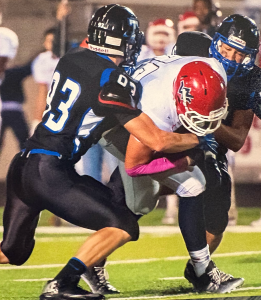
Even subtle things—the side of the field and the sun’s angle at kickoff— play into the psychology of the rivalry. “Being the away team on our own field is like driving someone else’s car,” Redford said. “Things are just a little different… Those minor adjustments can take a while to overcome at the start of the game.”
And sometimes, the smallest details can become the most memorable traditions. “There is one song that comes to mind during this game. ‘Run This Town’ by Rhianna adds a unique tradition that I associate with the Titan-Monarch rivalry,” Redford said. “That was something that we played when I was a player.”
After all the touchdowns, tackles, chants, and pride, Foundation Field stands not just as a stadium—but as a monument to a rivalry that has become a rite of passage. “I remember winning the first game, and the fans rushing the field,” Branigan said. “There was also pride that the Titans beat the Monarchs.”
The final score for this year’s Titan-Monarch game was 41-14, with the Titans winning their 10th match against the Monarchs in the history of the rivalry. The Titans scored 35 points in the first half, while holding the Monarchs to 0 points.
The Monarchs didn’t score their first points of the game until the last two minutes of the third quarter. While three out of the last four games have been controlled by one team, the games have been, and always will be competitive.
